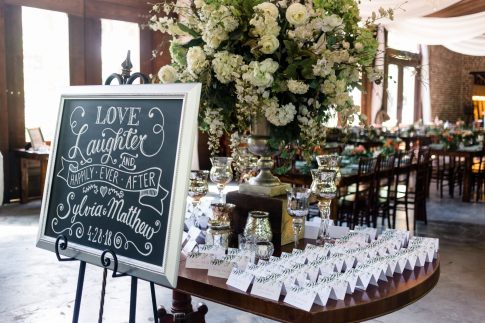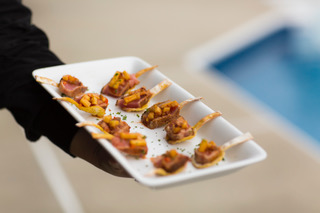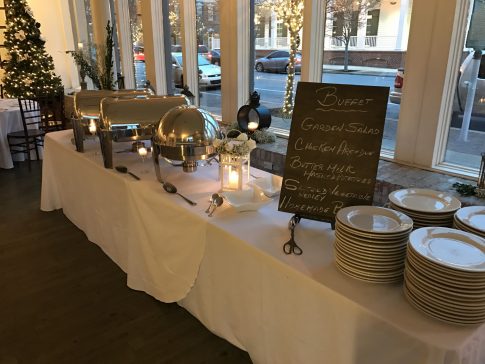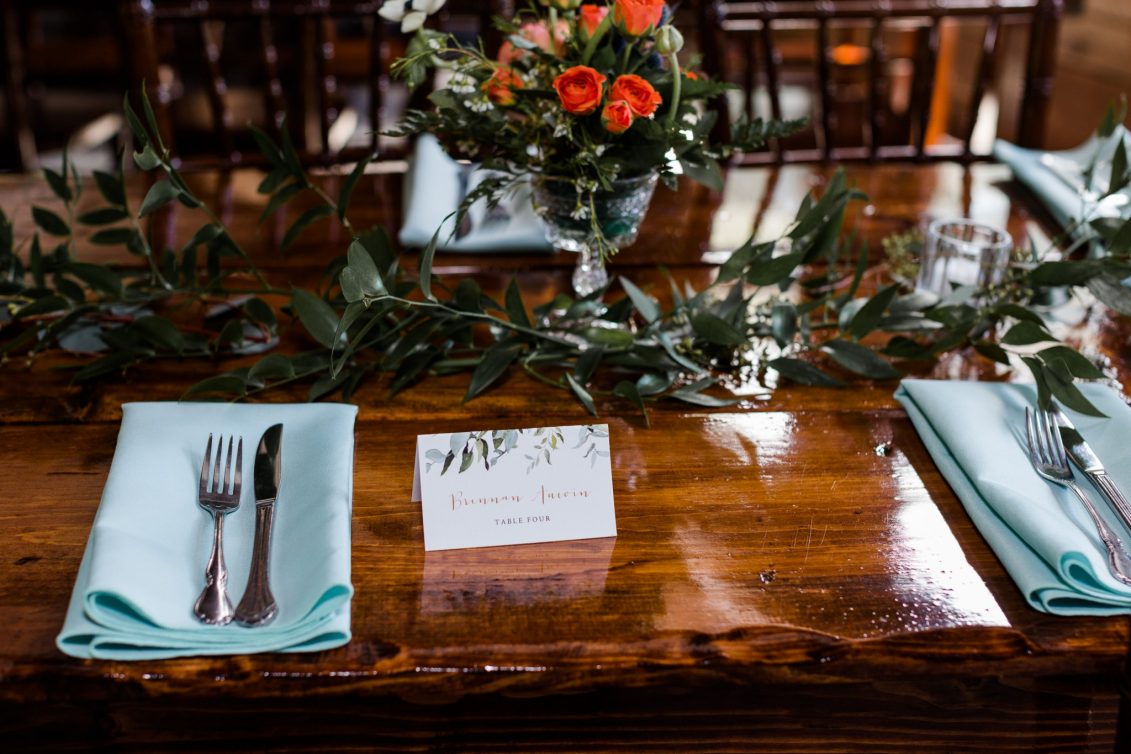When thinking through the wedding planning process, most couples immediately identify food and menu as an integral part of the wedding reception. However, the style of service for that menu can have an even bigger impact on the actual flow of events and the overall feel of the wedding. Whether providing your guests with a plated dinner, a buffet, stations, heavy hors d’oeuvres, or a combination of several options, the food service method can affect you and your wedding in several ways.
 Plated Dinner
Plated Dinner
While often considered the most formal of all service options, a plated dinner can significantly affect the planning process – especially the collection of RSVPs. If offering your guests a choice on their plated dinner entree, all options need to be included on your RSVP card so that guests can select their options ahead of time. These final numbers will need to be provided to your caterer typically between 7- 21 days prior to the wedding.
This style of service also requires a floor plan with name cards. Often times, guests don’t remember which entree they selected (or want to switch last minute) which can throw off catering numbers. So if going this route, remember to include a designation on each name card for the dinner option selected for each guest. If you like the formal feel of a plated dinner but want to skip the extra work, you can provide a duo entree (such as a smaller portion of chicken and beef) so that guests will be able to sample both options but all receive the same meal.
While plated dinners can sometimes be a least expensive option in terms of food pricing, the labor requirements are greater – oftentimes leading to overall pricing higher than a buffet and comparable to food stations. Additionally, plated dinners also require a longer period of time for dinner service, so keep that in mind when creating your timeline.
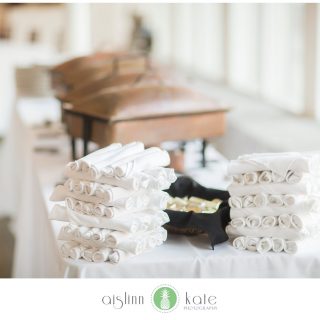 Buffet
Buffet
While sometimes deemed slightly less formal than a plated dinner, a buffet is a great way to give your guests a filling meal without making extra work for yourself during the planning process. With a buffet, you can select as few or as many entree options as you’d like. That way, guests can try a little of everything and even come back for seconds – an option not available during a plated dinner. With a buffet, you also have a choice regarding seating charts – they’re completely optional when serving a buffet and can easily be skipped.
While most buffets can have higher food costs than plated dinners – especially if offering two or three entree options – the labor costs are lower. Similar to plated dinners though, each guest does need an actual seat in order to sit down and enjoy their buffet dinner.
Stations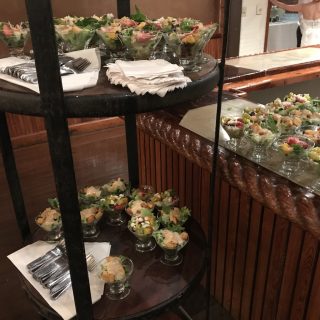
Stations are often the perfect option for large weddings or those with space constraints. Stations allow you to spread your menu selections throughout your venue and to allow guests to decide exactly when they want to eat. By being located in different areas, food stations help to create a flow through a large or disjointed space as well. They’re also a fun option if you want your menu to be interactive. Most caterers provide some variation on action stations that involve a live “show” with a chef or server actually making and plating the food for each individual. This service type also allows for lots of creative new ways of plating and displaying food as often seen on Pinterest.
In terms of seating, while some guests may decide to hit the bar or dance, others will get food that doesn’t necessarily require a guest to sit to eat and enjoy. Therefore, a seat is not required for every single guest. As a result, a seating chart is never made for a reception with stations. Instead guests will pick up their plates/utensils/necessary items at the station as opposed to at a table.
In regards to pricing, stations tend to come in slightly above plated dinners and buffets. While the food costs are similar to a buffet, stations also require higher staffing numbers as servers and chefs are often needed to set up and man each station.
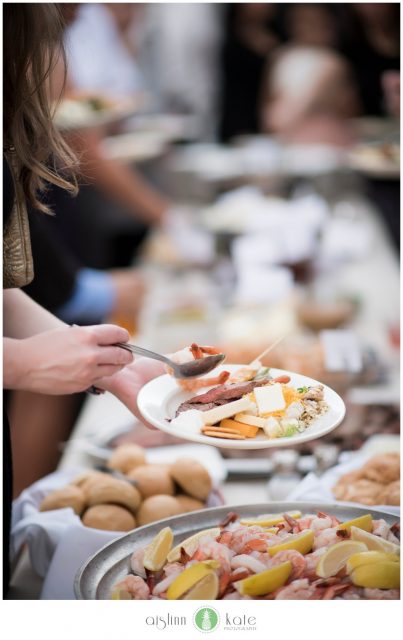 Heavy Hors D’oeuvres
Heavy Hors D’oeuvres
While menus featuring heavy hors d’oeuvres are often perceived to have lower costs, this is usually not the case. It takes more items in larger quantities to fill up guests with hors d’oeuvres, so this option can be one of the more expensive in terms of food cost. Labor, however, is comparable to that of a buffet.
For a shorter reception that occurs away from a meal time, hors d’oeuvres can be a great option. If you’re hosting a morning or early afternoon reception, heavy hors d’oeuvres can be an easy way to provide food without serving a full meal, which of course can lower costs.
If you do decide to go the heavy hors d’oeuvres route, most caterers recommend that you include at least six to eight different hors d’oeuvres options to ensure that you have enough food and enough variety to count as a meal.
___
Regardless of your style of service, be sure to ask your coordinator and caterer of the various implications for your wedding reception. While you can’t go wrong with a good menu, being prepared for the various types of food service will ensure a smooth wedding reception with very happy guests!
~Blog by Macky


